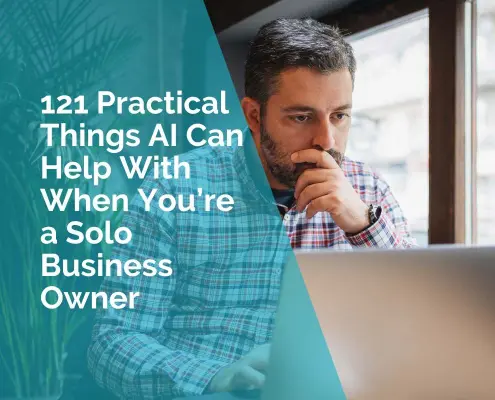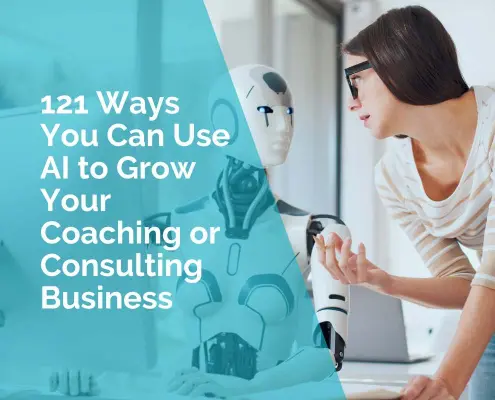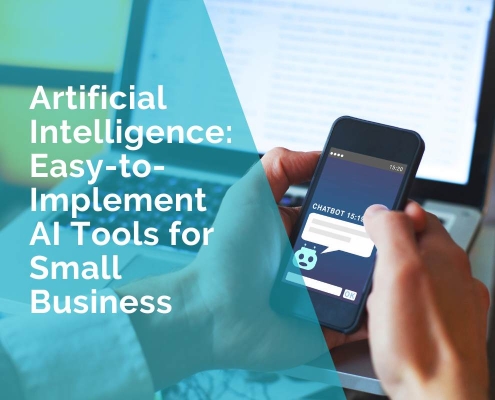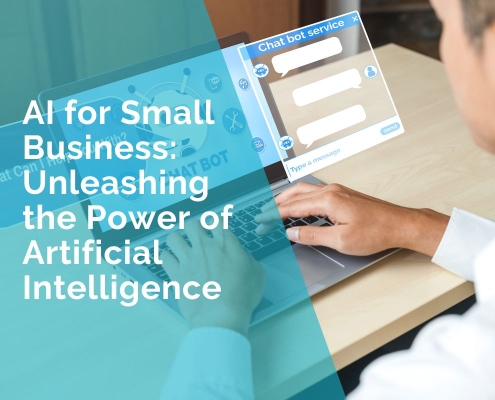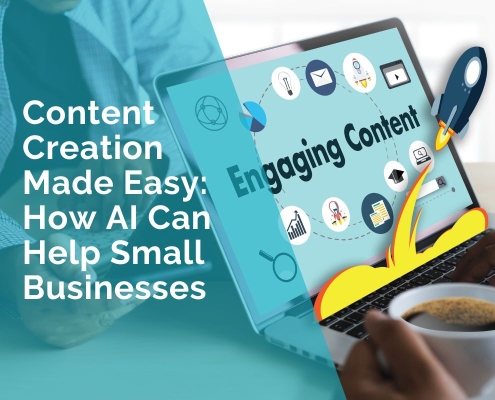Smart Hiring for Small Businesses: Leveraging AI and Digital Tools to Build Winning Teams
Hiring the right people is one of the most important—yet most challenging—tasks for small business owners. With limited budgets, tight schedules, and growing competition from larger employers and remote-first companies, small business recruitment needs to be both strategic and efficient.
Thankfully, digital transformation and AI-driven tools have opened new doors, giving small businesses access to technology that once was only available to enterprise-level corporations. These tools are not just nice to have—they’re critical in navigating today’s fast-changing hiring landscape.
This guide explores how small businesses can harness AI, automation, and smart marketing techniques to attract, evaluate, and retain top talent. Whether you’re hiring your first employee or building a growing team, these strategies will help you stay competitive in the digital age.
Why Your Hiring Process Needs a Digital Upgrade
If you’re still relying on generic job boards, manual resume reviews, and email back-and-forths to hire candidates, you’re not alone—but you’re also not setting yourself up for success.
According to industry surveys, 76% of hiring managers struggle to find qualified candidates. Many job seekers abandon applications that are too long or complicated. Others simply never see your job post because it’s not optimized for search engines.
Moreover, today’s candidates expect a seamless, engaging digital experience—just like your customers do. Your hiring process is a reflection of your business. A slow, outdated or impersonal approach can damage your brand and lead top applicants to go elsewhere.
The good news? AI-powered tools, website marketing strategies, and recruitment automation can help small businesses not only compete but thrive in the modern hiring environment.
Step 1: Use AI Tools to Save Time and Improve Candidate Screening
Sifting through applications by hand is not only time-consuming, it’s also prone to unconscious bias and human error. With AI screening tools, small businesses can automate the process of reviewing resumes, scoring applicants, and identifying the best matches—without needing a large HR department.
What Can AI Screening Tools Do?
- Parse resumes for keywords related to skills, experience, and qualifications
- Rank candidates based on how closely they match the job description
- Flag applicants who meet “must-have” or “deal-breaker” criteria
- Continuously improve through machine learning and recruiter feedback
These platforms allow business owners to focus on high-value candidates, eliminating hours of admin work.
Action Step: Start with budget-friendly AI tools like Manatal, Recruitee, or Breezy HR, which are designed with small teams in mind. Most come with built-in resume parsing, automated ranking, and easy integrations with your website or job boards.
Step 2: Turn Your Website into a Recruitment Magnet
Your business website is not just for customers—it’s also your digital headquarters for future employees. Yet many small businesses overlook this.
A strong Careers page can act as a year-round hiring funnel.
Even when you don’t have open roles, it can showcase your workplace culture, highlight team achievements, and plant the seed for top talent to follow your business.
What Should Your Careers Page Include?
- Your mission and values (why someone would want to work with you)
- Clear job descriptions with key responsibilities and benefits
- Application instructions that are short, mobile-friendly, and easy to complete
- Testimonials or quotes from current team members
- A section for general interest or future job inquiries
Also, use SEO best practices—include role-related keywords (“marketing assistant Sydney”) and structured data to improve how your job posts appear in search results.
Action Step: If you don’t already have one, create a Careers page on your website. Add a form or email collection field so interested people can submit their resume even when jobs aren’t available.
Step 3: Automate Routine Hiring Tasks to Save Hours Each Week
Recruiting isn’t just about interviews—it’s also filled with repetitive admin. From scheduling interviews to sending follow-up emails, these small tasks add up fast, especially when you’re managing everything yourself.
Today, automation can handle many of these pain points. For example:
- Use chatbots to answer common applicant questions instantly
- Automate email sequences for different hiring stages (thank you, rejection, next steps)
- Integrate calendars so candidates can self-book interviews
- Set up dashboards to track where candidates are in your pipeline
Even more advanced options now exist. For instance, a powerful AI recruiting tool can analyze candidate responses, predict job fit, and streamline applicant tracking—all while freeing up your time to focus on interviews and culture fit. These tools give small businesses a competitive edge without the overhead of a large HR team.
By removing the manual bottlenecks, you create a smoother, faster, and more professional experience for both you and the applicant.
Action Step: Try tools like Calendly for scheduling, Zapier for workflow automation, and Notion or Airtable to build a visual hiring pipeline dashboard. Many of these tools integrate easily with your chosen recruiting platform.
Step 4: Market Your Job Openings Like You Market Your Products
Recruitment is no longer just an HR task—it’s a form of digital marketing.
Every job ad is a mini sales pitch for your business. If you’re not promoting your roles with the same care you give your products or services, you’re missing out on quality candidates.
Tactics for Marketing Your Job Openings:
- Create landing pages for open positions and share them across platforms
- Post on your blog about what it’s like to work at your company
- Use visuals, videos, or behind-the-scenes Instagram Stories to bring your brand to life
- Share job listings in your email newsletters
- Create a social media hashtag for hiring (e.g., #WorkAtBrandName)
If you’re looking to refine your hiring process even further, try out some tips to help candidates feel more comfortable and confident during the hiring journey—particularly helpful for remote interviews and digital onboarding.
Action Step: Pick one open role and create a “mini campaign” around it—one blog post, two Instagram Stories, one LinkedIn post, and a CTA in your newsletter. Monitor the performance and adjust as needed.
Step 5: Keep the Human Element in Digital Hiring
While automation and AI speed up the process, they can’t replace emotional intelligence. Candidates still want a personal connection—someone who sees their potential and treats them with respect.
The key is blending tech with human touchpoints:
- Use automated screening to shortlist candidates
- Send a personalized video or voice note to top applicants
- Offer real-time feedback or updates through email or messaging platforms
- Keep interviews warm and conversational
Action Step: Add a step in your hiring workflow where a human team member sends a personalized message to shortlisted candidates before interviews. This boosts engagement and gives your brand a more human feel.
Step 6: Watch for Bias in Your Hiring Systems
AI can be powerful—but it can also be problematic if not configured carefully. Many automated hiring tools carry the risk of algorithmic bias, especially if they’re trained on non-diverse data.
For example, an AI system might learn to favor certain universities or previous employers while penalizing applicants from non-traditional backgrounds.
To avoid this:
- Train your AI tools on diverse and representative data
- Conduct regular audits of hiring decisions
- Avoid over-relying on resume gaps or traditional credentials
- Keep human oversight at key decision points
Action Step: Choose AI tools that allow you to adjust or review their scoring criteria. Include a second pair of human eyes on all rejections to ensure fairness.
Step 7: Focus on Skills, Not Just Credentials
The future of work is skills-first—not resume-first.
Traditional hiring practices often filter out incredible candidates because they don’t have the “right” degree or job title. But AI tools can now help you assess real-world skills instead of just credentials.
Small businesses benefit especially from hiring people who are adaptable, curious, and capable of growing into new roles—even if they lack a conventional background.
You can:
- Ask candidates to complete a short task or assignment
- Use job simulations or case studies
- Review personal projects, portfolios, or online certifications
Action Step: Create a 30-minute skills assessment related to the job’s real challenges. This lets you see how applicants think and perform, rather than how well they write resumes.
Step 8: Don’t Overlook Your Online Employer Reputation
Before applying, candidates check your digital presence—just like customers do.
That includes your:
- Google Business Profile
- Website
- Social media activity
- Online reviews
- LinkedIn company page
- Mentions on industry forums or news
Your employer brand matters just as much as your product brand. Even if you’re a team of 3, positioning yourself as a great place to work can help you attract candidates who care about culture and mission.
According to The Wall Street Journal, companies that prioritize wellness and employee-focused digital strategies are outperforming their competitors, signaling a shift toward values-driven growth.
Action Step: Google your business name + “careers” and see what comes up. Update outdated content and respond to any public feedback from past employees or applicants.
Hiring Smarter, Not Harder
Recruitment for small businesses has undergone a permanent transformation. It’s no longer just about filling a position—it’s about strategically attracting the right individuals who share your values, bring fresh perspectives, and have the potential to grow alongside your business.
In today’s digital-first world, hiring has become a cornerstone of business growth. With the right systems in place, small businesses can hire with the same confidence, precision, and reach as larger competitors.
By embracing AI tools, website marketing, and ethical, people-first recruitment practices, you can:
- Save valuable time by automating repetitive tasks
- Lower hiring costs without sacrificing quality
- Improve candidate matching through smart screening tools
- Build a brand that top talent actively seeks out
Best of all, you don’t need a massive budget or a full HR team to compete. Today’s digital hiring solutions are more accessible, affordable, and scalable than ever before. Whether you’re hiring one person or building an entire team, the right mix of technology and strategy can make the process smoother, faster, and more effective.
Small businesses that embrace innovation and put people at the heart of their hiring decisions will stand out—not just as employers, but as brands of choice in a crowded market.
So start small if needed. Experiment with one tool, refine your job marketing, or enhance your careers page. With each step, you’ll build a hiring process that not only supports your current needs but also prepares your business for the future.
Because at the end of the day, hiring the right people isn’t just a task—it’s one of your most powerful growth strategies.
***************
Mark Wilson



